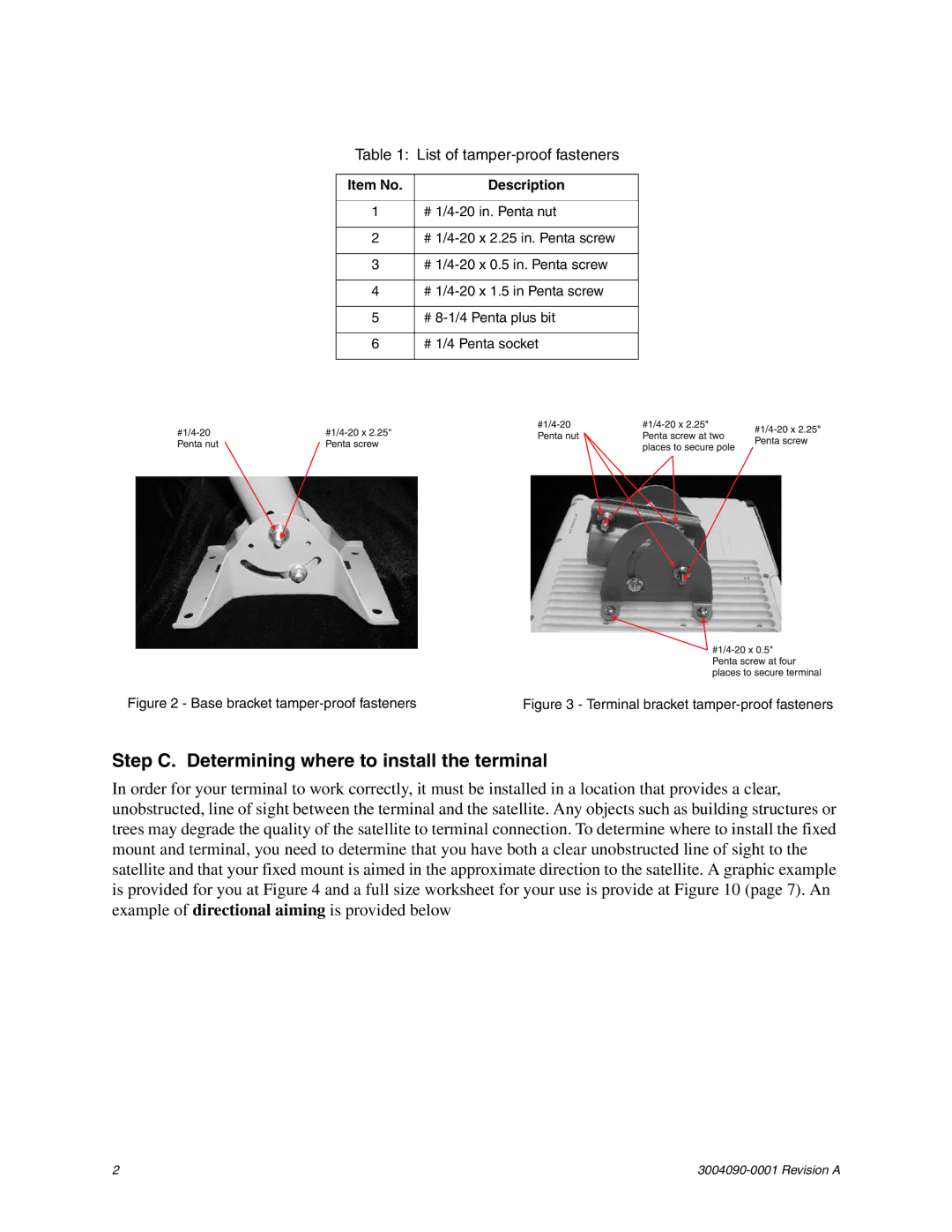3004090-0001, 3004066-001 specifications
The Hughes 3004066-001 and 3004090-0001 series represent advanced satellite communication technologies designed for various applications, including military, commercial, and governmental use. These models are known for their innovative design and robust performance, catering to the ever-evolving demands of modern communication systems.One of the standout features of the Hughes 3004066-001 is its enhanced data throughput capabilities. This model supports high-speed internet access, allowing users to transmit and receive large volumes of data efficiently. The technology employed includes advanced modulation techniques that optimize bandwidth utilization, making it ideal for applications requiring reliable connectivity in remote locations.
In contrast, the Hughes 3004090-0001 focuses on versatility, featuring a dual-band operation that enables seamless communication across different frequency bands. This flexibility makes it suitable for diverse operational scenarios, whether in maritime, aviation, or land-based environments. The model's robust design ensures it can withstand harsh conditions, providing reliable service even in extreme weather.
Both models incorporate state-of-the-art encryption and security protocols to safeguard data transmission. This aspect is critical, especially in defense and government operations where data integrity and confidentiality are paramount. The Hughes technology ensures that all communications are secure from potential cyber threats.
Power efficiency is another notable characteristic of the Hughes 3004066-001 and 3004090-0001. They are designed to operate effectively with lower power consumption, which is essential for satellite operations in remote areas. This energy efficiency not only reduces operational costs but also extends the lifespan of the equipment.
User-friendly interfaces and customizable configurations are also key features of these models. With intuitive control systems and a variety of options for scalability, users can easily adapt the technology to fit their specific needs. This adaptability is particularly beneficial for organizations that require quick deployment and flexibility in their communication solutions.
In conclusion, the Hughes 3004066-001 and 3004090-0001 models exemplify cutting-edge satellite communication technology. With their high data throughput, dual-band operation, robust security features, energy efficiency, and user-friendly designs, they cater to a wide range of applications, ensuring reliable connectivity and performance in the most challenging environments. As technology continues to advance, these models remain at the forefront of satellite communication innovation, meeting the demands of users worldwide.

